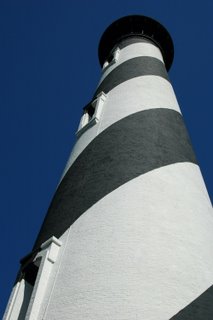
In 1823, a $5,000 government grant was established and the current limestone tower was converted by contractor Elias Wallen into Florida's first lighthouse by 1824.
During the Civil War, Confederate sympathizers removed the lens in St. Augustine's light tower. The tower was not re-lit again until 1867.
During the next 30 years, mariners constantly complained that the light tower did not provide the visibility they needed. After a series of fruitless corrective actions, coupled with the increasing threat of land erosion near the lighthouse, the lighthouse board provided new funds for a new lighthouse to be built in 1871.
Paul Petz, who designed the Library of Congress, undertook the building of this new lighthouse and created a 165-foot tower with a first-order Fresnel lens. The new lighthouse was completed in 1874.
In 1898, St. Augustine's lighthouse was used as a lookout tower in the Spanish-American War. The light keeper of St. Augustine's served as the lookout and had signal flags and a telephone line that ran to the customs house to send an alert if needed.
 Likewise, the lighthouse had an involvement in both World Wars. It was dimmed in World War I so as not to aid German U-boats in finding American ships to sink.
Likewise, the lighthouse had an involvement in both World Wars. It was dimmed in World War I so as not to aid German U-boats in finding American ships to sink.In World War II, the tower was used as a lookout as a team of light keepers worked around the clock from the top of the tower.


